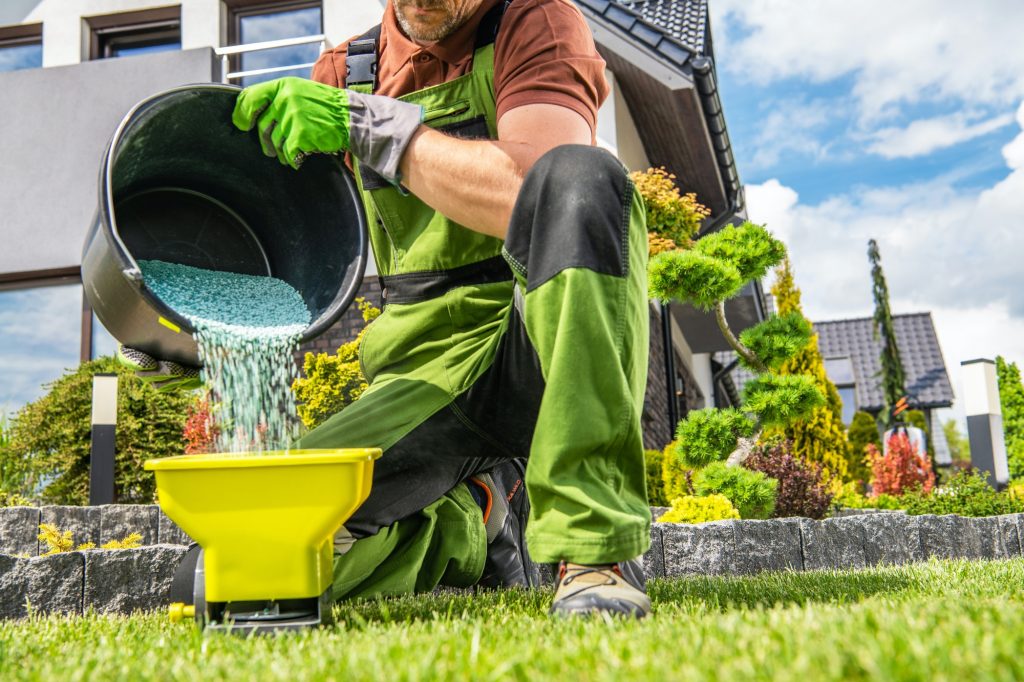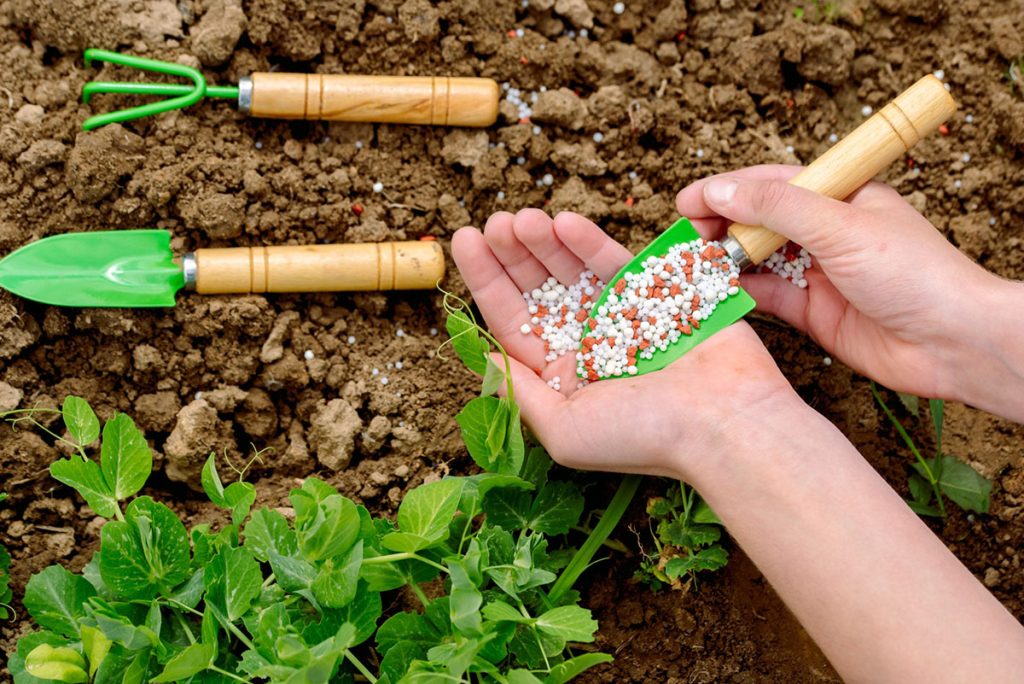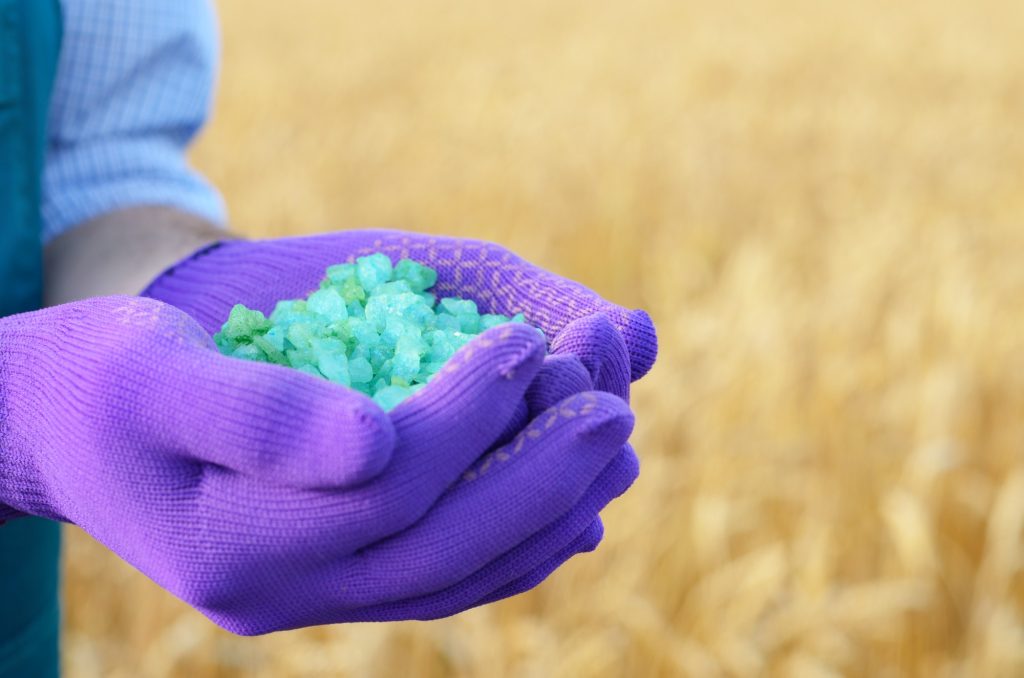10-10-10 also referred to as “all-purpose” fertilizer means that the fertilizer being used contains 10% of nitrogen, phosphorus, and potassium also known as N:P:K respectively. It is mostly used to boost the yield of perennial crops and is synthetic. Small plants also require 10-10-10 fertilizers to improve their foliage.
For nitrogen-loving crops, 10-10-10 is the perfect fertilizer to use.
Not every plant needs this type of fertilizer to grow. Some other plants can only yield when fertilizers like 4-8-12 are used. This means that such a fertilizer has a mixed ratio of 4% Nitrogen, 8% Phosphorus, 10% Potassium to produce good fruits. This fertilizer is used for fruiting plants like Mangoes, tomatoes, apples.
The amount of nitrogen in this fertilizer is lower compared to potassium and phosphorus. When you apply nitrogen too early, your fruit could come out badly while the leaves will sprout well.
This type of fertilizer is recommended if the leaves are more beneficial to you. Some fertilizers contain zero nitrogen. A fertilizer with a ratio of 0-20-20 is an example of a nitrogen-absent fertilizer.
How Is This All-Purpose (10-10-10) Fertilizer Used?
Before choosing what type of fertilizer to utilize in your garden or farm, you must consider some factors.
These factors include running a test on the soil, determining what kind of plant you want to grow, searching for the plant’s nutritional requirements, and other factors you will discover as you read further.
1. Test Your Soil
A soil test simply reveals the number of elements (nitrogen, phosphorus, and potassium) present in the soil.
You also need to understand the plant’s requirements before spraying it with fertilizers. A fruiting crop needs more potassium than nitrogen. Thus, the nitrogen level of the soil and fertilizer must be minute compared to the other elements in the fertilizer.
That’s because nitrogen reduces the yield of the fruit. It channels the growth to the foliage instead. Contrariwise, a plant that needs its foliage boosted will require more nitrogen to that effect.
If the elements in the soil are balanced, you will need to give your plant an overall boost. A 10-10-10 fertilizer will give your soil all-round fertility.
2. Plants Requirement
Perennial plants make use of 10-10-10 fertilizers to boost their fertility. Fruiting perennials like raspberries and strawberries will come out with good fruits if planted during spring.
The fertilizer must be applied before the leaves begin to sprout. If applied during late spring will cause the leaves to sprout instead of producing delicious berry fruits.

Brassicas and other vegetables can be fertilized with 10-10-10 fertilizer after a month. The most important part of these plants is the foliage. The foliage or leaves are the harvested part. If the fruits were more important, then it will need a fertilizer of ratio 4-8-12 with a lower nitrogen level.
The fertilizer is applied by the side of the leafy vegetables after one month of germination. This prevents the plant from experiencing a shock.
3. Runoff
When irrigation occurs, nitrogen present in the 10-10-10 fertilizer can be washed off the soil into the drainage system or sewer.
This causes pollution and affects wildlife in the water bodies. You must apply the appropriate amount of fertilizer. Washing of fertilizers off the soil is inevitable but it can be prevented from polluting the sea and other water bodies.
Excessive dressing of your plants with fertilizer can cause them to wilt or become unhealthy. This is referred to as overfeeding. Thus the testing of soil and plant requirements before fertilizing your crop can’t be overemphasized.
How To Detect An Overfed Plant
The leaves and fruit of a plant should be examined to detect overfeeding. When a plant doesn’t produce fruits, it means it has been overfertilized or has taken an excessive amount of nitrogen. Plants could also show signs of wilting after it has been overfertilized.
Overfeeding Results In Salt Build Up In The Soil
Fertilizers contain soluble salts. After the application of fertilizers, the plants will unable to take up water from the soil. Some of these salts are toxic to human health. They also affect the health of other plants.
Proper Way To Fertilize

Plants make use of varieties of fertilizer. However, if you are looking for the measurement for your lawns, here you have it. For lawns with a land measurement of 1000 square feet, 1lb of 10-10-10 Fertilizer should be used.
The amount of nitrogen in the fertilizer is 10%. 100 divided by 10 will give you 10. That means you will need to apply at least 10lb for 1000 square feet. The role of nitrogen in plants is to stimulate the growth of its foliages. Phosphorus boosts the growth of the roots and fruits. Potassium helps in the digestion of plant meals.
While fertilizing, apply some water to avoid root burns.
Fertilizers are somewhat corrosive. Run soil tests intermittently to know what the plant requires for growth and avoid overfeeding. The results of proper fertilizing are the production of lush foliages, strong root systems, and delicious fruits.
Precautions For Using The 10-10-10 Fertilizer
Here are some things you need to know about this fertilizer.
- Mix your 10-10-10 fertilizer with water before dressing it on your plants to avoid burns
- Always clean your tools before and after use. Fertilizers can damage your tools due to their corrosiveness
- Avoid spraying your fertilizers during rainy seasons. It can be washed away causing pollution to water bodies
Advantages Of Using 10-10-10 Fertilizers
10-10-10 Fertilizers don’t require much calculation. Once you have tested the soil and determined what nutrients the plant needs, all you need to do is sprinkle some granules of 10-10-10. It disintegrates quickly and helps the plant grow.
Disadvantages Of Using 10-10-10 Fertilizers
Inorganic fertilizer like 10-10-10 only fixes nutrients in the soil imminently. It can’t be used for long-term fertility.
10-10-10 Fertilizer Alternatives
If you feel using 10-10-10 fertilizer requires too much cautiousness. You can opt for organic fertilizers.
Examples of this fertilizer are; urea, compost, sulfur, bone meal, e.t.c. There are disadvantages to using organic fertilizers. They don’t contain the same nutrients as inorganic fertilizers. You will need to calculate how many elements are in them before use but most gardeners skip this process.
Organic fertilizers however feed microorganisms with the nutrients it fixes in the soil. Other organic alternatives are listed below.
Fish emulsion, manure, bone meal, Bat guano. If you don’t buy into the idea of using inorganic fertilizer, simply use 5-5-5 fertilizer in your garden.
How To Convert Fertilizers
Here’s a basic table you’ll find helpful when reviewing fertilizer conversion details.

| Type Of Fertilizer | Measurement |
|---|---|
| Wood ash and other types of organic meals | 1 coffee cup equals 1/3 pounds |
| Limestone dust | 1 coffee cup equals 3/4 pounds |
| Coarse granulated fertilizer | 1 coffee cup equals 1/2 pounds |
| Sulfur | 1 coffee cup equals 1/2 pounds |
| Urea | 1 coffee cup equals 1/3 pounds |
| Compost | 1 coffee cup equals 1/6 pounds |
| Finely granulated fertilizer | 1 coffee cup equals 1/3 pounds |
What is 10-10-10?
Is 10-10-10 good for grasses?
How often do you apply 10-10-10 fertilizer?
Can you use too much 10-10-10 Fertilizer?
Can you apply fertilizer after rain?
How long does it take 10-10-10 fertilizer to work?
How do I apply 10-10-10 fertilizer to my garden?
What brand of Fertilizer is 10-10-10?
What happens if you use too much fertilizer?
Do you need to water after fertilizing?
How long should you stay off the grass after fertilizing?
Can you spread fertilizer by hand?
Conclusion
10-10-10 is the best fertilizer to use if you want to feed your plant with the three most essential elements (Nitrogen, Phosphorus, and potassium). It requires no measurement as you know the number of elements in the fertilizer already.
It is best to apply this fertilizer if you want thicker lawns and shrubs. Excessive nitrogen in the soil could cause wilting. So ensure you use the right measurements while trying to achieve thicker leaves.
